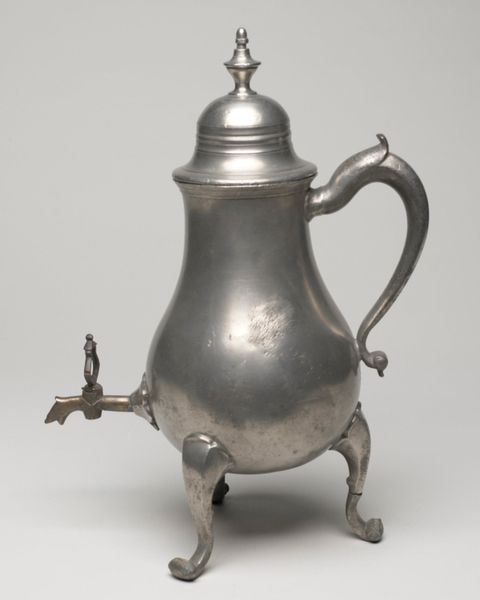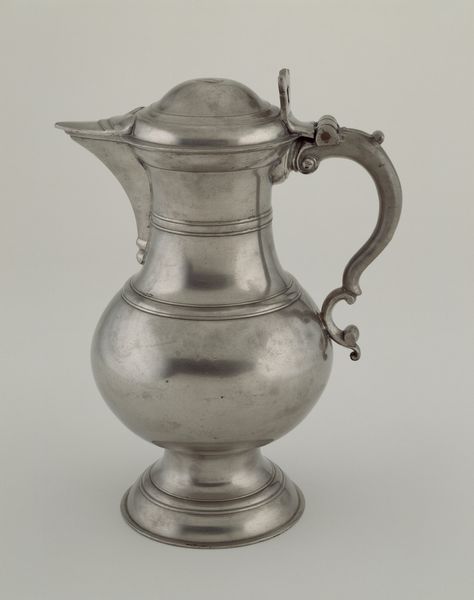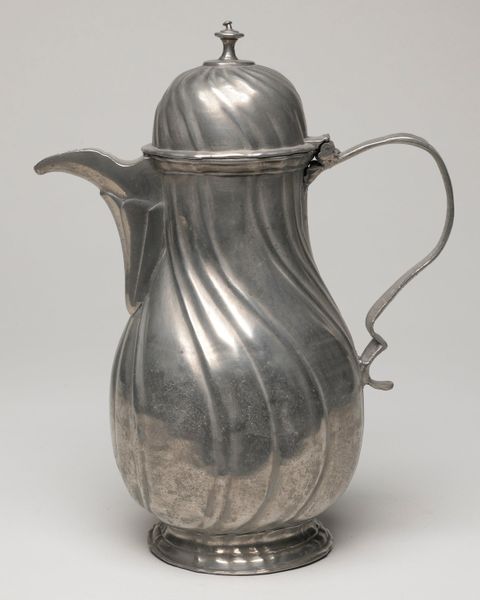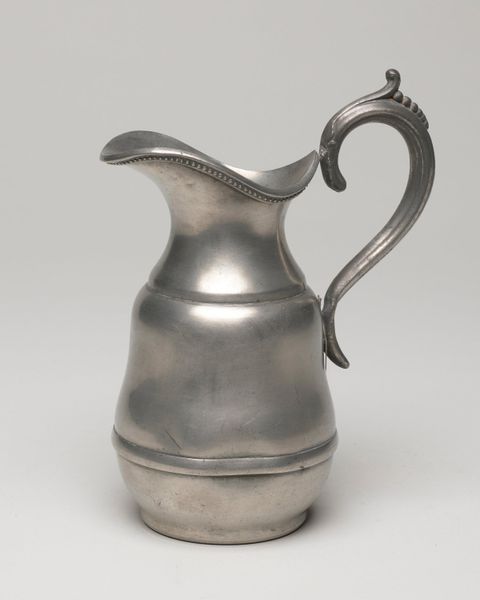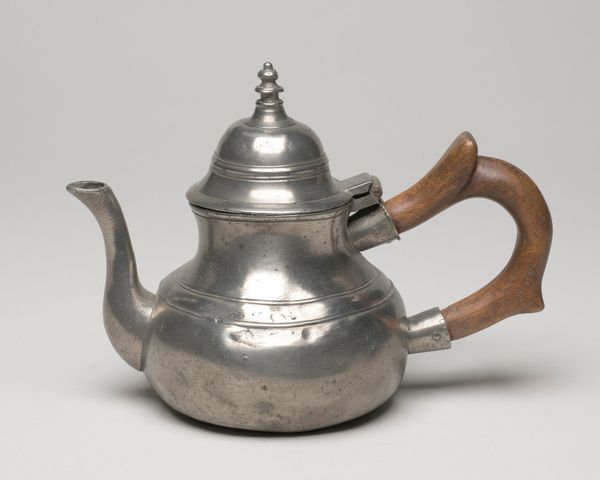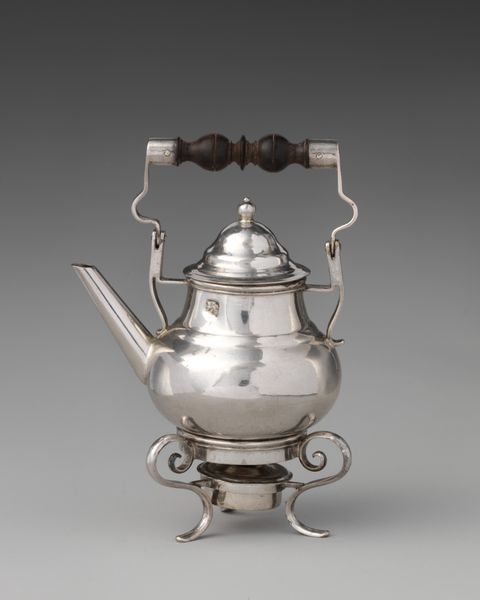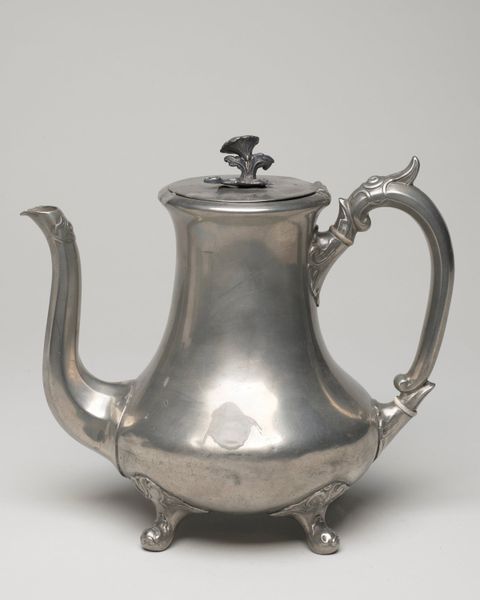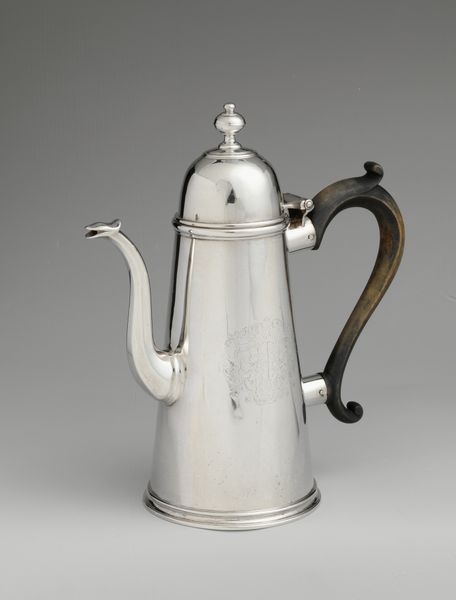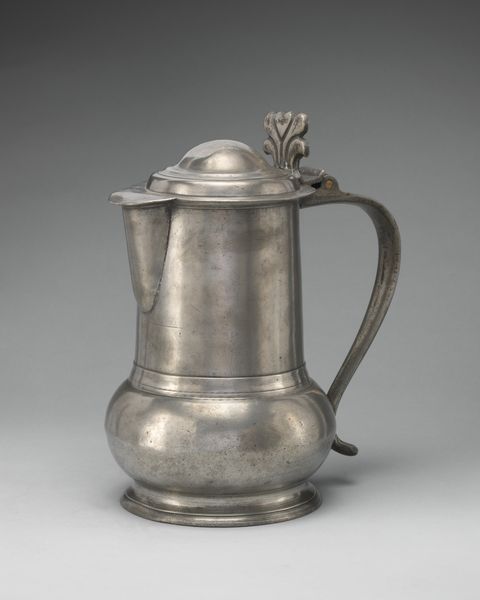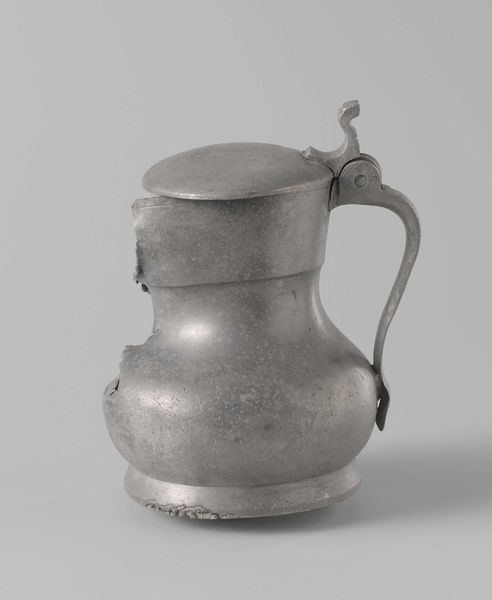
assemblage, metal, ceramic
#
baroque
#
assemblage
#
metal
#
ceramic
#
decorative-art
Dimensions: 5 1/2 x 3 1/2 x 2 1/2in. (14 x 8.9 x 6.4cm)
Copyright: Public Domain
Editor: This is an 18th-century mustard pot, currently housed here at the Minneapolis Institute of Art. It appears to be crafted from metal and possibly ceramic. What immediately strikes me is the prominent hole in its side – it creates a strangely compelling juxtaposition of functionality and damage. What is your take? Curator: Indeed. Formally, the piece invites questions of integrity. We see a pronounced tension between the pot's intended function – the containment and preservation of a condiment – and the obvious rupture which renders it essentially useless in its primary objective. Editor: Do you think the break detracts from the art object? Curator: The break itself can be considered a visual element, interrupting the smooth curvature of the vessel. The jagged edges create a new, unplanned contour, introducing an element of chance and entropy. This alters how we perceive its symmetry, wouldn't you agree? The eye is drawn to this void. Editor: Absolutely, I never thought of damage as an actual visual element. So the tear actually complements its form? Curator: Complement is perhaps too strong. But it certainly complicates it, challenging our notions of perfection, wholeness, and the inherent value we assign to objects based on their physical state. We have a simultaneous recognition of beauty and decay. The smoothness is contrasted by the roughness. Editor: I see it. The dialogue between these characteristics creates another way to understand Baroque art, or any art form, thank you! Curator: Indeed, this work certainly provides interesting ground to understand composition as more than just presence but of absence as well.
Comments
No comments
Be the first to comment and join the conversation on the ultimate creative platform.
